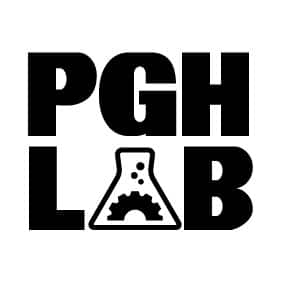About the PGH Lab, City of Pittsburgh project
The PGH Lab is an initiative developed by the City of Pittsburgh to source innovative services and products from local startups that have the potential to make the City more efficient, sustainable, and inclusive. This year, we agreed to have NetBeez participate in the PGH Lab project for two simple reasons:
- we wanted to work with the City of Pittsburgh, our hometown
- our team was looking to get customer feedback on our dashboard and service
In fact, despite working with many top-notch, Fortune 500 and 1000 enterprises over the past 5 years, all deployment projects were handled remotely. Due to the nature of our sales operations, deployments are performed by the customer’s network engineering team. In this case, thanks to the PGH Lab project, we were offered the opportunity to work first-hand with the City’s network engineers. PGH Lab was a great opportunity to see what improvements could be made to the deployment and evaluation process.

Our application was well received and NetBeez was picked by the Innovation and Performance Department to test! The test would run over the course of a four-month proof of concept, in which our end-user experience monitoring solution would be used to proactively and efficiently detect and troubleshoot network problems for the City.
The selection process
Participating in PGH Lab was very simple for us, due to the extreme care and planning put into the program by PGH Lab.
We submitted an online application in November 2017 and held a presentation to the PGH Lab committee in December. The committee was comprised of City employees as well as representatives from different agencies, such as the Urban Redevelopment Authority (URA), the Public Housing Authority, and the Parking Authority.
Around the end of January, NetBeez was admitted to PGH Lab along with other startups, which included:
- Meta Mesh Wireless Communities: Nonprofit using mesh networking technology to provide low-cost public Wi-Fi. Matched with the Housing Authority of Pittsburgh.
- Zensors: Sensors and cameras that can be used to monitor or collect data about an environment. Matched with the Pittsburgh Parking Authority.
The proof of concept
The Proof of Concept (PoC) was carried out over three months, starting at the end of January through mid-May. Here’s a breakdown of what we did each month:
Month 1: We identified the locations where the PoC would take place, picked the networks (e.g. LAN, Wi-Fi, or both) to be monitored, performed a site survey to select the placement of the monitoring sensors, and defined the monitoring targets and performance tests to run.
Month 2: We deployed the monitoring sensors in the target areas, configured the dashboard and anomaly detection rules, and installed the service status dashboard that could be accessed by the City’s employees and help-desk staff.
Month 3: During the third month of the PoC, we reviewed and analyzed the network performance data collected by the sensors, tuned the alert profiles, and trained the local staff on how to use of the public dashboard. All the use cases documented throughout the pilot were included in a solution proposal to be delivered by the City’s administration.
Outcome and lessons learned
As for any other installation, at NetBeez, we defined a successful pilot as having all the user expectations that were set at the beginning of an evaluation met. In this case, the goals of the pilot were:
- To deliver network engineers real-time and historical network performance data that captures the end-user experience.
- To offer the help desk staff a service status dashboard that eases the identification of user versus network problems.
- To offer upper management daily and weekly network reports that included key performance indicators of network services.
To this extent, the pilot with the City of Pittsburgh was hugely successful. In retrospect, we attribute its successful outcome for the following reasons:
- The project had dedicated resources assigned that oversaw its successful progress.
- The project had well-defined goals, milestones, and expectations that were communicated to everyone involved.
- The project had a clear timeline where the start and end date were defined and agreed upon.
Going forward, we have decided to always make sure that each evaluation we’d run would meet these three simple requirements.





